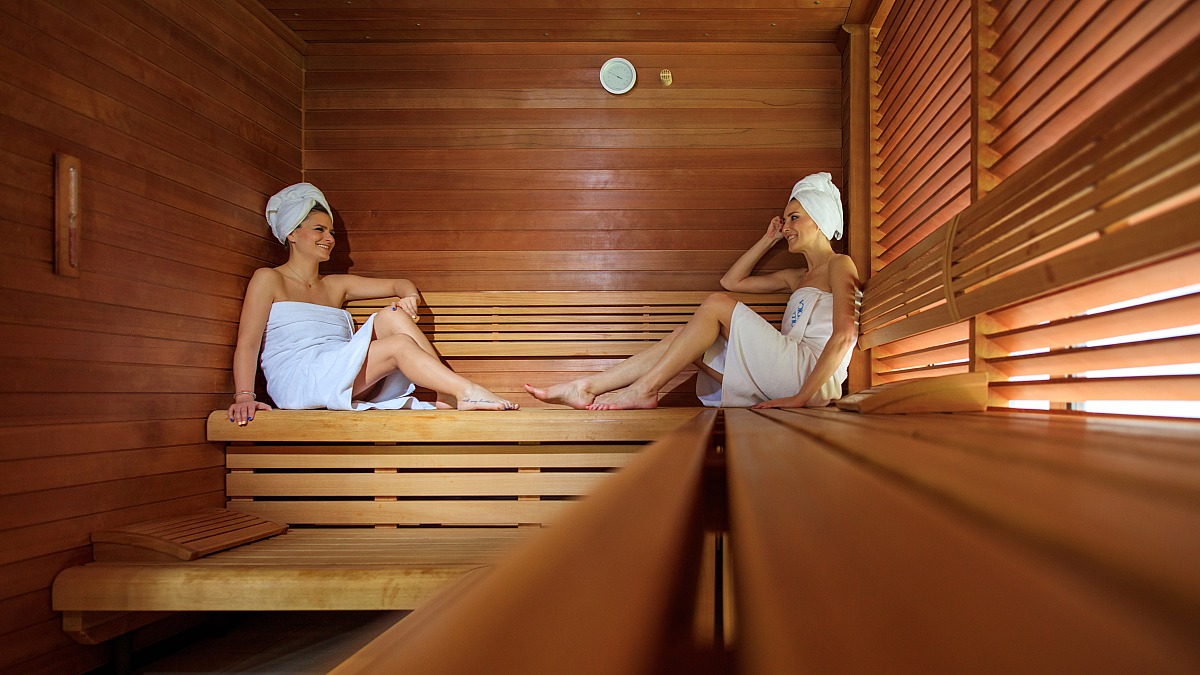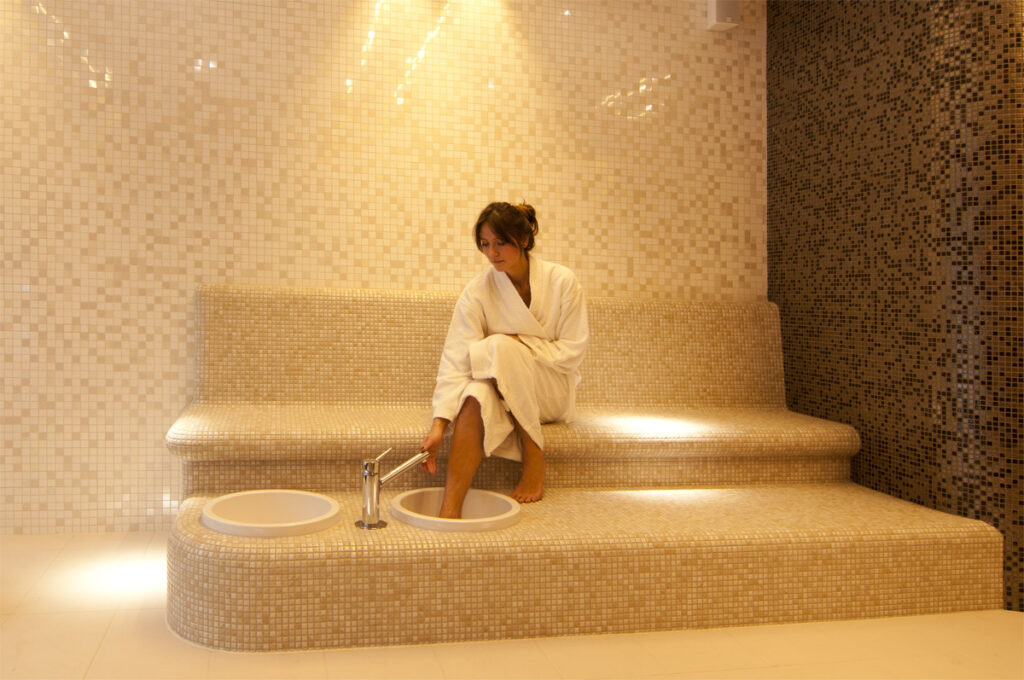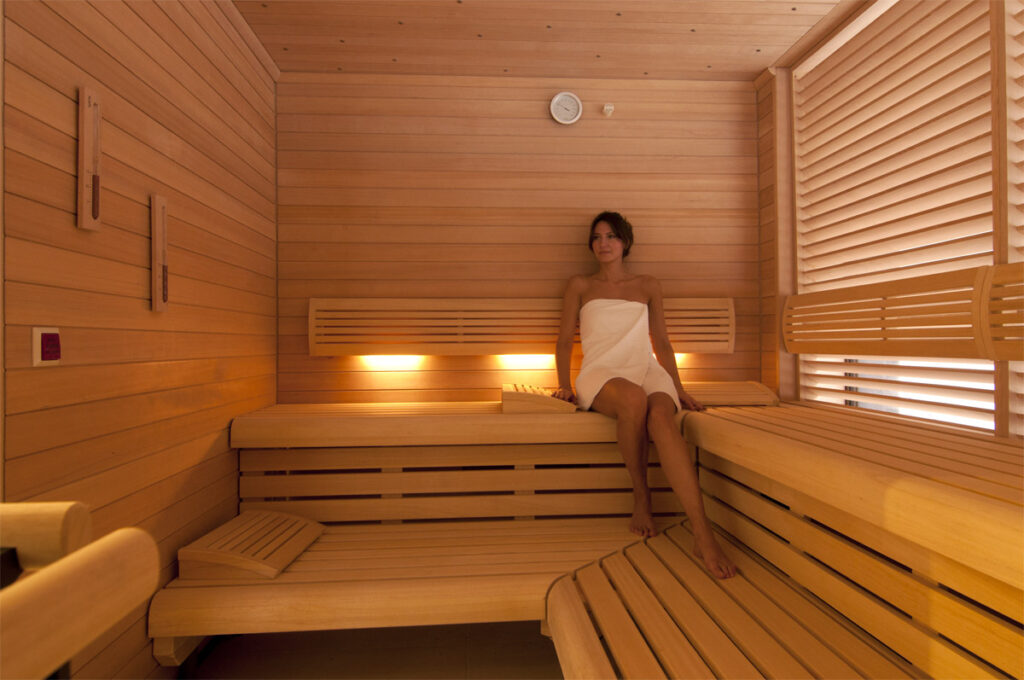Sauna and running training. What mistakes should not be made?

Sauna and running training: A quite common belief, and quite rightly so, is that the sauna and its health-promoting properties are combined. Most of us associate such sessions with relaxation and regeneration of our body. The approaching autumn weather and lower temperatures certainly encourage you to take warm baths.
The change in temperature and the end of summer fever also favor running training and building better performance. The question arises: is it possible to combine training and sauna sessions? In the running community, you can hear various opinions, but myths are also often repeated. The answer is obvious to many, but is it really the right one?
Correct use of sauna sessions
Assuming that we have no contraindications to undertake such activity (infections, cardiological problems, vascular problems, etc.) – let’s do it according to art! Warm-up, main part and cool-down – sound familiar? Of course! These are permanent elements of every training. Sauna can be successfully treated not only as a time of relaxation and biological regeneration, but also as a training unit.
Exposing yourself to alternately extreme temperatures significantly burdens our body (especially the cardiovascular system), but in a slightly different way than typical training. A gentle warm-up is welcome before the first ascent. We should start the session from lower positions so as to gradually expose ourselves to higher and higher temperatures.
How long should single entries to the sauna last?
It depends on our condition. The average time is considered to be 10-12 minutes. For beginners, this time may be too long. So don’t force it! Do as much as you can. The time spent and our possibilities may vary depending on humidity, temperature and the session conducted by a sauna master or lack thereof. 2-3 such entries to the sauna are considered standard.

How long to rest between entries?
A good rule of thumb is to spend as much time cooling down as heating up. Rest between successive ascents is very important. The first shower should be in lukewarm water. Only after such a shower do we proceed to cooling, starting from the distal (further) parts of the body, ending with the head. After the last session, we need a little more time (about 30 minutes).
As you can see, to properly use the sauna, you need to reserve at least 1.5 hours, so these visits should not be random.
Positives of proper sauna:
- stimulation of the immune system and thus better immunity,
- improvement of cardiac and vascular efficiency,
- better blood supply and nutrition: muscles, tendons and ligaments,
- reducing neuromuscular tension,
- acceleration of metabolism and detoxification, including the removal of unwanted substances after training.
An example of a full sauna session (entry for 10 minutes):
- Hygiene – a thorough shower is necessary before the first entry. In addition to regular dirt, you will remove cosmetics and perfumes from the skin that may make it difficult for the pores to release sweat. After showering, lightly dry your body. This will facilitate the activation of thermoregulation and water management processes.
- First entry (10 mins). Quite an important point is the sauna outfit, or rather the lack thereof. While inside, make sure that your position is fully on the towel. The fewer parts of the body are covered, the more efficiently the processes related to the thermal bath will take place. It is not recommended to wear a swimsuit, that’s what towels are for. Clothes (especially wet ones) and jewelry become very hot, which can irritate your skin. Once you’re inside, start from a low or medium shelf, preferably in a position where your feet are at the same level as the rest of your body. If you know your feet are cold, it’s a good idea to warm them up first. Once you feel comfortable after a few minutes, you can take it to the next level.
- After your first entry, take a lukewarm shower. Only then start the cooling process. Rest for at least 10 minutes – that is, as long as you were in the sauna. According to art, it is not recommended to drink fluids between sessions. This way, your body will be able to reach deeper reserves of body fluids.
- After resting, it’s time to enter again and repeat the ritual.
- It is worth extending the final cooling and rest period to at least 30 minutes. During this time, replenish fluids and electrolytes. A leisurely walk and gentle stretching and breathing exercises will help your body return to normal functioning.
So what about the sauna after running?
It is common to go to the sauna after training – this is a mistake. After running training, regardless of the type, it is recommended to cool down. This is supposed to calm down our body and calm our heart. Using a sauna has a completely opposite effect. As the temperature increases, blood vessels dilate, which lowers blood pressure. To make up for the difference and maintain a safe level, the heart must work harder – which puts additional strain on it after training. After physical exercise, our body temperature also increases, and the thermoregulation system fights bravely throughout the duration of physical activity to prevent us from overheating. Therefore, further heating is extremely tiring for the body.
Another disadvantage of sauna use after training is excessive muscle and nervous relaxation. But how?! I guess that’s the point… Yes, but not right after training. Persistent post-exercise tension and the so-called “pump” contribute to building muscle memory. And excessive relaxation reduces the value of the training performed.
If not after training, then maybe before…?
There may certainly be a temptation to replace the warm-up with a session in the sauna. Nothing could be further from the truth. The warm-up is intended to stimulate each system to work harder. By stimulating the neuromuscular system, we mark what we will do in the near future. We stimulate the body to function more effectively. Using a sauna before training will unnecessarily calm the nervous system and reduce the excitability of relaxed muscles. During training, our body will prioritize processes related to thermoregulation, which will not allow us to fully develop our body’s capabilities.


If not before and after….then when?
By collecting the above information, the best solution will be to plan your sauna session on days off from training, or at least a few hours apart from training. This solution is the safest for each of us. It will protect you from excessive strain and allow you to fully use the potential of both physical activity and the benefits of thermal baths.
If, despite the information collected, you are still tempted to experiment with combining these two options, first check your training plan. See what the main goals are and what is the priority in a given training unit.
Author of the text: Mariusz Kaczmarek – M.A. in physiotherapy. By day, a physiotherapist Medical Column helping patients combat pain in the spine and peripheral joints. Amateur runner (recreational up to 10 kilometers).
